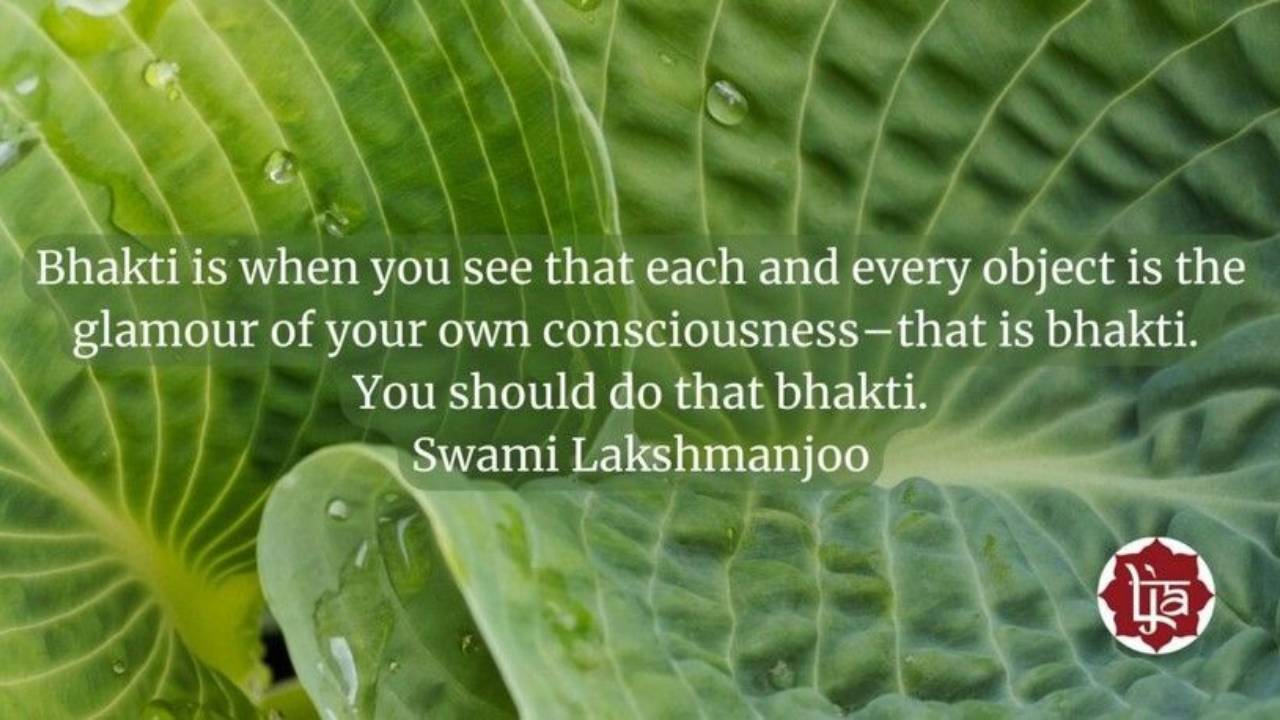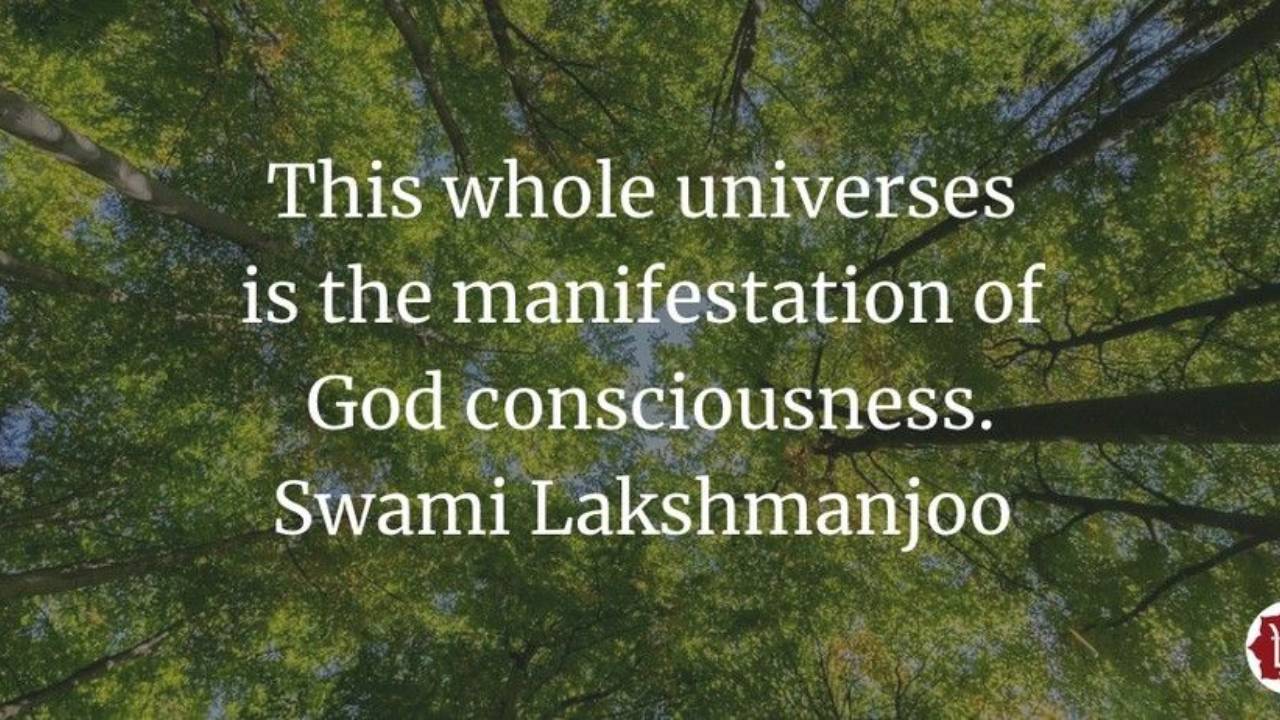
In this excerpt from his book Kashmir Shaivism – The Secret Supreme, Swami Lakshmanjoo explains the Seven States of the Seven Perceivers (pramātṛis), and their respective energies (pramātṛi śaktis), a subject unique to Kashmir Shaivism.

Chapter Eight
The Seven States of the Seven Perceivers (Pramātṛin)
Now, let us discuss the seven states of the seven pramātṛins (perceivers) and their importance. The first state is called sakala. The sakala state is that state where perception takes place i...

A clear and unique explanation of the much-discussed term “maya” (illusion) in the light of Kashmir Shaivism as Swami Lakshmanjoo reveals to us how we have become limited being.
This is an excerpt from Abhinavagupta’s Paramarthasara: The Essence of the Highest Reality.
View on YouTube or listen to the audio below…
PS DVD 1 (00:55:10)
मायापरिग्रहवशाद्
बोधो मलिनः पुमान् पशुर्भवति ।
काल-कला-नियतिवशाद्
रागाविद्यावशेन संबद्धः ॥१६॥
māyāparigrahavaśād
bodho malinaḥ pumān pa...

In this important excerpt from The Magical Jewel of Devotion in Kashmir Shaivism – Bhaṭṭa Nārāyaṇa’s Stava Cintamani, Swami Lakshmanjoo explains why, in Kashmir Shaivism, māyā (illusion) is really svātantrya (freedom).

Audio 4 (45:26)
यस्याः प्राप्येत पर्यन्त-विशेषः कैर्मनोरथैः ।
मायामेकनिमेषेण मुष्णंस्तां पातु नः शिवः ॥७३॥
yasyāḥ prāpyeta paryanta-viśeṣaḥ kairmanorathaiḥ /
māyāmekanimeṣeṇa muṣṇaṁstāṁ pātu naḥ śivaḥ //73//
Let that Lord Śiva protect us (pātu naḥ śiva; na...

An excerpt from Abhinavagupta’s Tantraloka, 8th Āhnika, about the highest point—bindu—and it’s meaning in Kashmir Shaivism. The contents of this blog post are copyright protect and may not be used without the written permission of the owner.

Painting by Claudia Dose, used with permission of the artist.
ūrdhve bindvāvṛitirdīptā
tatra padmaṁ śaśiprabham /
śāntyatītaḥ śivastatra
tacchaktyutsaṅgabhūṣitaḥ // 377 //
Ūrdhve bindvāvṛitirdīptā, above Sadāśiva, above the element of Sadāśiva there
...
DVD 2.3 (28:32)
ध्यायतो विषयान्पुंसः सङ्गस्तेषूपजायते ।
सङ्गात्संजायते कामः कामात्क्रोधोऽभिजायते ॥६४॥
क्रोधाद्भवति संमोहः संमोहात्स्मृतिविभ्रमः ।
स्मृतिभ्रंशाट्बुद्धिनाशो बुद्धिनाशात्प्रणश्यति ॥६५॥
dhyāyato viṣayānpu...
Kashmir Shaivism is so rich and detailed in its theology and soteriology that it has been aptly described as “the mystical geography of awareness.”
It includes a highly developed system of spirituality that emphasizes not only the intellectual understanding of its philosophy but also the direct realization, the direct experience, of its truth.
For the Kashmir Shaiva, the very nature of truth, its defining characteristic, is that it is both limited and unlimited, atomic and universal. The huma...
“The light of Consciousness is not only pure Consciousness”, and Swami Lakshmanjoo explains why this is so in this excerpt from the book Self Realization in Kashmir Shaivism, The Oral Teachings of Swami Lakshmanjoo. This is from Chapter Three; Entrance into the Supreme Reality.
This is a good book to understand some of the basics of Kashmir Shaivism, as well as learn about Swami Lakshmanjoo’s life.

Swami Lakshmanjoo teaching in Kashmir (sitting on the right side of the picture).
Chapt...
Swami Lakshmanjoo explains what is moksha (liberation) in Kashmir Shaivism and compares it to other philosophical traditions like Vedānta and Buddhism. This is an excerpt from the fourteenth chapter of the book, Kashmir Shaivism – The Secret Supreme, revealed by Swami Lakshmanjoo. (This is not a transcript of the audio).

The view that ignorance is the cause of bondage and perfect knowledge is the cause of freedom (mokṣa) is commonly accepted by all Indian philosophers. Yet, in reality, thes
...Swami Lakshmanjoo explains what is real devotion and initiation in Kashmir Shaivism (from Abhinavagupta’s Bhagavad Gita, chapter 4, verse 34).
DVD 4.3 (24:35)
तद्विद्धि प्रणिपातेन परिप्रश्नेन सेवया ।
उपदेक्ष्यन्ति ते ज्ञानं ज्ञानिनस्तत्त्वदर्शिनः ॥३४॥
tadviddhi praṇipātena paripraśnena sevayā /
upadekṣyanti te jñānaṁ jñāninastattvadarśinaḥ //34//
[Lord Kṛṣṇa]: That knowledge you will understand by bowing before them [i.e., the learned masters], paripraśnena, by placing questions be...
In the summer of 1987, Swamiji began compiling important verses from the various scriptures he had studied throughout his life. Each Sunday he would distribute one or two slokas to devotees, at the same time giving, in brief, their essential meaning. In all Swamiji revealed a total of eighty-five verses. The following year Swamiji traveled to Nepal where he spent a month with the Hughes family recording his revelation on those verses in the “Special Verses on Practice“.
When asked about the sou...
In his commentary on the Bhagavad Gita, Abhinavagupta shared a important verse he wrote about the supreme Goddess – Para Devi in Kashmir Shaivism, where he explained… Who is the supreme Devi and where does she exist?
Devī Stotra
Tathā ca mayaiva śivaśaktyavinābhāva stotre [Bhagavad Gita, chapter 15, comm. verse 19]. I, [Abhinavagupta], have also somewhere in the Śiva Śakti Avinābhāva Stotra, I have penned down ślokas for Devī.
Who is Devī?
JOHN: Svātantrya śakti.
SWAMIJI: Svātantrya śakti ...

In this excerpt, Swami Lakshmanjoo reveals “Why Lord Shiva has created this universe, which is Shakti, His supreme energy?”
This lecture is from the Bodhapañcadaśikā [15 verses of wisdom], verse 5.
Bodhapañcadaśikā [15 verses of wisdom]
तस्यैवैषा परा देवी स्वरूपामर्शनोत्सुका ।
पूर्णत्वं सर्वभावेषु यस्या नाल्पं नचाधिकम् ॥५
tasyaivaiṣā parā devī svarūp-āmarśanotsukā /
pūrṇatvaṁ sarva-bhāveṣu yasya nālpaṁ na cādhikam // 5 //
Tasyaiva parā devī, this collective state of the universe...











